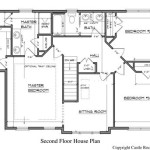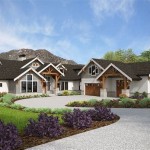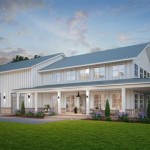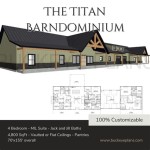```html
River House Plans On Stilts: Design, Benefits, and Considerations
The concept of river house plans on stilts, also known as pier or pile foundations, has gained considerable traction in recent years. This architectural approach involves elevating a structure above the ground or water level, often utilizing timber, concrete, or steel posts to support the building's weight. River house plans on stilts are particularly well-suited for locations prone to flooding, unstable soil conditions, or where minimal environmental impact is desired. This article will delve into the design considerations, numerous benefits, and potential drawbacks associated with this type of construction.
The initial idea behind river house plans on stilts stems from the need to adapt to challenging environmental conditions. Historically, this construction method has been used in areas with high water tables, coastal regions susceptible to storm surges, and riverine environments where seasonal flooding is common. By raising the habitable space above these potential hazards, architects and engineers aim to create safer, more resilient homes. The design process involves carefully assessing the specific site conditions, including soil composition, water levels, and potential wind loads, to ensure the structural integrity and longevity of the building.
Flood Protection and Environmental Resilience
One of the primary advantages of river house plans on stilts is the enhanced flood protection they offer. By elevating the living space above the anticipated flood level, the risk of water damage to the structure and its contents is significantly reduced. This is particularly crucial in areas designated as floodplains, where traditional ground-level construction may be subject to frequent and costly repairs. The stilt design allows floodwaters to pass underneath the house, minimizing the hydrostatic pressure exerted on the building's foundation and walls. This feature can also lead to lower flood insurance premiums, as the structure is deemed less vulnerable to flooding.
Beyond flood protection, river house plans on stilts can contribute to environmental resilience. In coastal areas, elevating the structure can mitigate the impact of storm surges and rising sea levels. This is particularly important in the face of climate change, where increased frequency and intensity of extreme weather events are anticipated. Furthermore, the stilt design allows for natural drainage and prevents the disruption of natural water flows, reducing the risk of erosion and preserving the integrity of the surrounding ecosystem. The elevated structure also minimizes the building's footprint on the land, reducing its impact on sensitive habitats and allowing for the preservation of vegetation.
The choice of materials for the stilts is crucial for ensuring long-term durability and resilience. Timber stilts, often pressure-treated to resist rot and insect infestation, are a common choice in many areas. Concrete stilts, while more expensive, offer superior strength and resistance to corrosion. Steel stilts are also used, particularly in areas with high wind loads or seismic activity, but they require careful coating and maintenance to prevent rust. The foundation design must also consider the potential for scour, which is the erosion of soil around the stilts caused by flowing water. Measures such as riprap or concrete collars can be implemented to protect the stilts from scour and ensure their stability.
Design Flexibility and Aesthetic Appeal
River house plans on stilts offer a high degree of design flexibility, allowing architects to create unique and aesthetically pleasing homes. The elevated structure provides opportunities for panoramic views of the surrounding landscape, enhancing the living experience and connecting residents with nature. The space beneath the house can be utilized for various purposes, such as parking, storage, or outdoor living areas. In some cases, the space can even be enclosed to create additional habitable space, although this must be done in compliance with local building codes and flood regulations.
The architectural style of river houses on stilts can range from traditional to modern, depending on the homeowner's preferences and the surrounding environment. Traditional designs often feature simple, vernacular forms that blend seamlessly with the landscape. Modern designs may incorporate sleek lines, large windows, and innovative materials to create a contemporary aesthetic. The use of cantilevered decks and balconies can further enhance the visual appeal of the structure and provide outdoor living spaces.
The design process should also consider the accessibility of the house, particularly for individuals with mobility impairments. Ramps or elevators may be necessary to provide access to the elevated living space. The design should also comply with the Americans with Disabilities Act (ADA) and other accessibility guidelines. The integration of sustainable design principles, such as energy-efficient windows, solar panels, and rainwater harvesting systems, can further enhance the environmental performance of the house.
Construction Challenges and Cost Considerations
While river house plans on stilts offer numerous benefits, they also present unique construction challenges. The foundation design must be carefully engineered to withstand the anticipated loads and environmental conditions. The construction process may be more complex and time-consuming compared to traditional ground-level construction. Specialized equipment and expertise may be required to install the stilts and ensure their proper alignment and stability.
The cost of constructing a river house on stilts can vary depending on several factors, including the size and complexity of the design, the materials used, and the location of the site. The foundation costs are typically higher than for traditional foundations due to the need for specialized engineering and construction techniques. The elevated structure may also require additional structural support, which can add to the overall cost. However, the long-term benefits of flood protection, reduced insurance premiums, and enhanced environmental resilience can often outweigh the initial cost premium.
Regulatory requirements can also impact the cost and feasibility of river house plans on stilts. Building codes and zoning regulations may impose restrictions on the height of the structure, the setback distances from property lines, and the use of certain materials. Floodplain regulations may require the elevation of the living space to a specific height above the base flood elevation. It is essential to consult with local building officials and engineers to ensure that the design complies with all applicable regulations. Obtaining the necessary permits and approvals can be a time-consuming process, but it is crucial to avoid delays and potential fines.
Site preparation is another important consideration. The soil must be adequately compacted and stabilized to support the weight of the structure. If the soil is unstable, it may be necessary to install pilings or other foundation enhancements. The construction site must also be accessible to heavy equipment and materials. In some cases, it may be necessary to clear vegetation or modify the terrain to facilitate construction. The environmental impact of site preparation should be minimized to protect the surrounding ecosystem.
The selection of a qualified contractor with experience in building river houses on stilts is crucial for ensuring the success of the project. The contractor should have a thorough understanding of the engineering principles involved and the specialized techniques required. The contractor should also be able to provide references from previous clients and demonstrate a track record of successful projects. A detailed contract should be prepared that outlines the scope of work, the timeline, the payment schedule, and the warranty provisions.
```
Our 20 Best Lake House Plans For Your Vacation Home Southern Beach

House On Stilts Stilt Plans Beach

Elevated Piling And Stilt House Plans Coastal From Home

Elevated Piling And Stilt House Plans Coastal From Home

Elevated Piling And Stilt House Plans Coastal From Home

Custom Home Builders House On Stilts Stilt Plans Tiny Beach

Homes On Stilts Insteading

Stilt Houses 10 Reasons To Get Your House Off The Ground

Elevated Piling And Stilt House Plans Coastal From Home

Homes On Stilts Insteading








